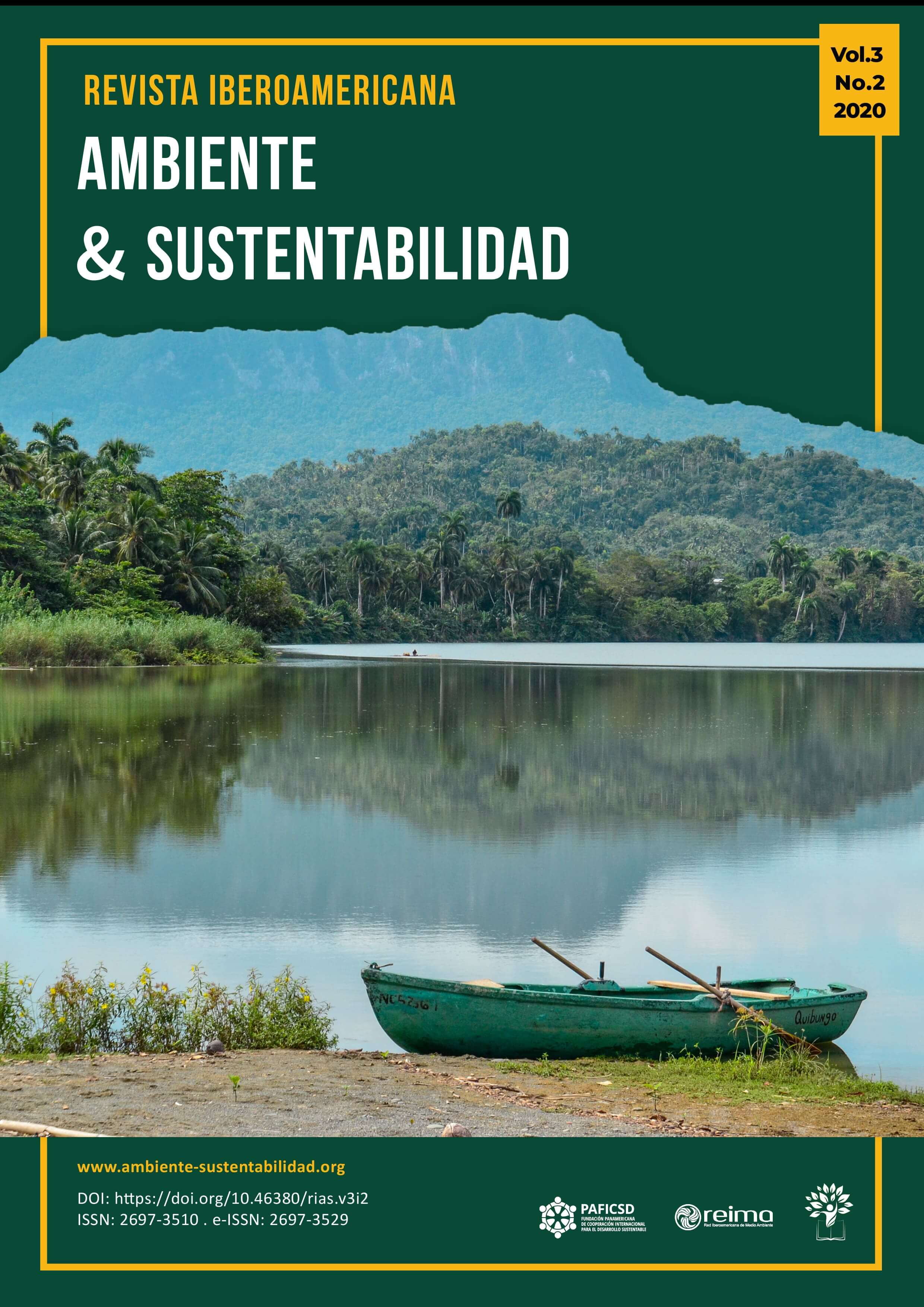Environmental education for the proper management of agrotoxic in rural communities of Manabí.
DOI:
https://doi.org/10.46380/rias.v3i2.95Keywords:
education strategy, environment, pollution, trainingAbstract
Agrotoxics are used worldwide to increase food production. The objective of this research was to apply a strategy through environmental education for the proper management of agrotoxics at Miguel Solórzano School. A qualitative methodology was used. The research was developed in three phases: the diagnosis, design and implementation of the strategy and evaluation of results. According to the characteristics of the population, we worked with two groups: children and adults. The evaluation of the strategy revealed that ignorance about pesticides decreased by 23% and understanding about the damage that these products can cause to health increased by 40%; the degree of concern about the effect of agrotoxics increased by 44%, so that the percentage of use of protective equipment increased by 44%. In the final disposal of agrotoxics containers, the delivery of empty containers to the collection center went from 0% to 80%. After applying the environmental education strategy, there is evidence of a change in perspective regarding the management of agrotoxics.
Downloads
Metrics
References
Bhandari, G. (2014). An Overview of Agrochemicals and Their Effects on Environment in Nepal. Applied Ecology and Environmental Sciences, 2(2), 66-73. http://doi.org/10.12691/aees-2-2-5
Bravo, R., Zamora, Villafuerte, A., Peñarrieta, S., Santana, F., Zambrano, F., y Fimia, R. (2020). Diagnóstico de uso e impactos de plaguicidas en el cultivo de tomate (Solanumly copersicum l.) en la parroquia Riochico, cantón Portoviejo, provincia de Manabí, Ecuador. The Biologist, 18(1), 105-118. http://dx.doi.org/10.24039/rtb2020181476
Decnovk, A., de Troyer, N., Houbraken, M., Dominguez, L., Nolivos, I., Van, W., Eurie, M.A., Spanoghe, P. & Goethals, P. (2019). Distribution of agricultural pesticides in the freshwater environment of the Guayas river basin (Ecuador). Science of the Total Environment, 646, 996–1008. https://doi.org/10.1016/j.scitotenv.2018.07.185
del Puerto, A., Suárez, S., y Palacio, D. (2014). Efectos de los plaguicidas sobre el ambiente y la salud. Revista Cubana de Higiene y Epidemiología, 52(3), 372-387. https://bit.ly/3hqmk3i
Elahi, E., Weijun, C., Zhang, H., & Nazeer, M. (2019). Agricultural intensification and damages to human health in relation to agrochemicals: Application of artificial intelligence. Land Use Policy, 83, 461-474. https://doi.org/10.1016/j.landusepol.2019.02.023
Federación Nacional de Cacaoteros. (2011). Uso y manejo seguro de plaguicidas en el cultivo del cacao 2011. Ministerio de Agricultura y Desarrollo Rural-Fondo Nacional del Cacao. https://bit.ly/34n8WYf
Ferreira, F., da Silva, L.G., Rigotto, R.M., Friedrich, K., & Campos, A. (Coord). (2015). Dossiê ABRASCO: Um alerta sobre os impactos dos agrotóxicos na saúde. Escola Politécnica de Saúde Joaquim Venâncio-Associação Brasileira de Saúde Coletiva. Editora Expressão Popular. https://bit.ly/3nyieZ4
García, A. (2012). Conocimiento y uso de medidas preventivas por los agricultores en el manejo de agroquímicos en la comunidad Mojanda Mirador, cantón Otavalo, periodo enero 2012 -octubre 2012 [Tesis de grado, Universidad Técnica del Norte]. Repositorio Institucional UTN. https://bit.ly/2KxiKrA
Gavilanes, G. (2014). La acumulación de envases de plaguicidas y su incidencia en la contaminación ambiental en el cantón Quero [Tesis de grado, Universidad Técnica de Ambato]. Repositorio Institucional UTA. https://bit.ly/2WjWQLf
Guzmán, P., Guevara, R., Olguín, J., y Mancilla, O. (2016). Perspectiva campesina, intoxicaciones por plaguicidas y uso de agroquímicos. Idesia, 34(3), 67-78. http://dx.doi.org/10.4067/S0718-34292016000300009
Hernández, E. (2014). Propuesta de un programa y centro de educación ambiental en la región de Coatepec Harinas, Estado de México [Tesis de grado, Universidad Autónoma del Estado de México]. Repositorio Institucional UAEM. https://bit.ly/37oAC0I
Herrera, M. (2011). Fórmula para cálculo de la muestra de poblaciones finitas. Investigación en Pediatría. https://bit.ly/3h2kDsy
Hidalgo, A., Romero, P., y Martínez, C. (2016). Estrategia de intervención comunitaria ambiental aplicada a la comunidad rural La Reforma en la Isla de la Juventud. Revista Novedades en población, 12(24), 94-103. https://bit.ly/2WniWfM
Hyland, C., & Laribi, O. (2017). Review of take-home pesticide exposure pathway in children living in agricultural areas. Environmental Research, 156, 559-570. http://doi.org/10.1016/j.envres.2017.04.017
Instituto Nacional de Estadística y Censos. (2016). Información Ambiental en la Agricultura 2016. https://bit.ly/3nx48qJ
Mantecón, C. (2015). Environmental education resources in Cantabria for preschool education [Tesis de grado, Universidad de Cantabria]. Repositorio Institucional UC. https://bit.ly/3mrwyRF
Ministerio de Agricultura, Ganadería, Acuacultura y Pesca. (2016). La política agropecuaria ecuatoriana: hacia el desarrollo territorial rural sostenible 2015-2025 (I Parte). https://bit.ly/37y2Bv4
Ministerio del Ambiente del Ecuador. (2018). Estrategia Nacional de Educación Ambiental para el Desarrollo Sostenible 2017–2030. https://bit.ly/2WsFSu5
Naranjo, A. (2017). La otra guerra: la situación de los plaguicidas en el Ecuador. Acción Ecológica. https://bit.ly/38gSkTl
Pacheco, R.M., y Barbona, E.I. (2017). Manual de uso seguro y responsable de agroquímicos en cultivos frutihortícolas. Ediciones INTA. https://bit.ly/2KEO8o0
Rohr, J.R., Barrett, Ch.B., Civitello, D.J., Craft, M.E., Delius, B., DeLeo, G.A., Hudson, P.J., Jouanard, N., Nguyen, K.H., Ostfeld, R.S., Remais, J.V., Riveau, G., Sokolow, S.H., & Tilman, D. (2019). Emerging human infectious diseases and the links to global food production. Nature Sustainability, 2, 445–456. https://doi.org/10.1038/s41893-019-0293-3
Rossetti, M.F., Stoker, C., & Ramos, J.G. (2020). Agrochemicals and neurogenesis. Molecular and Cellular Endocrinology, 510. https://doi.org/10.1016/j.mce.2020.110820
Shattuck, A. (2019). Risky subjects: Embodiment and partial knowledges in the safe use of pesticide. Geoforum. https://doi.org/10.1016/j.geoforum.2019.04.029
Yanggen, D., Crissman, C.C. y Espinosa, P. (2003). Los plaguicidas: impactos en producción, salud y medio ambiente en Carchi, Ecuador. Centro Internacional de la Papa, Instituto Nacional Autónomo de Investigaciones Agropecuarias. Editorial Abya Yala.
Published
How to Cite
Issue
Section
License
Copyright (c) 2020 María Isabel Delgado Moreira

This work is licensed under a Creative Commons Attribution-NonCommercial-ShareAlike 4.0 International License.
This work is licensed under a Creative Commons Attribution-NonCommercial-ShareAlike 4.0 International License (CC BY-NC-SA 4.0)
© This license allows users to distribute, remix, adapt, and build upon the material in any medium or format, provided that attribution is granted to the creator.














